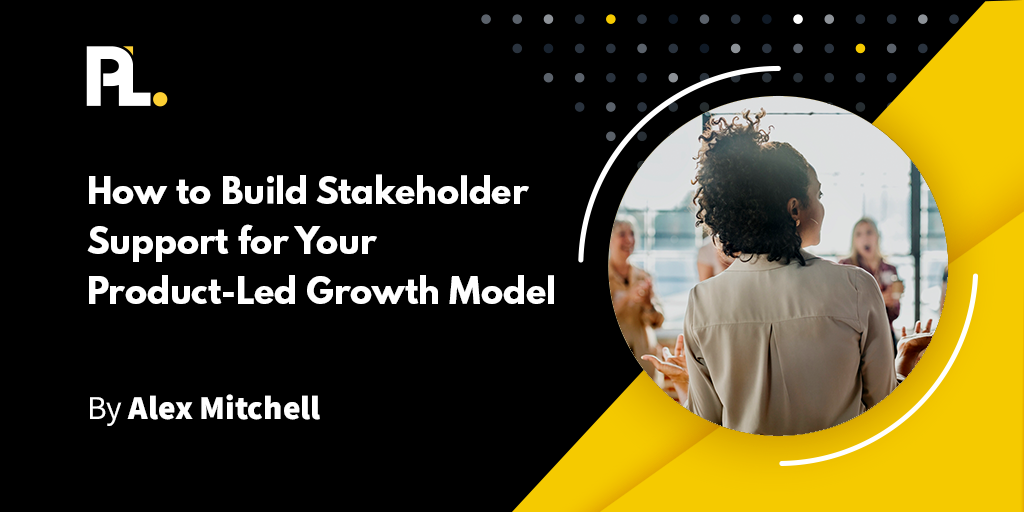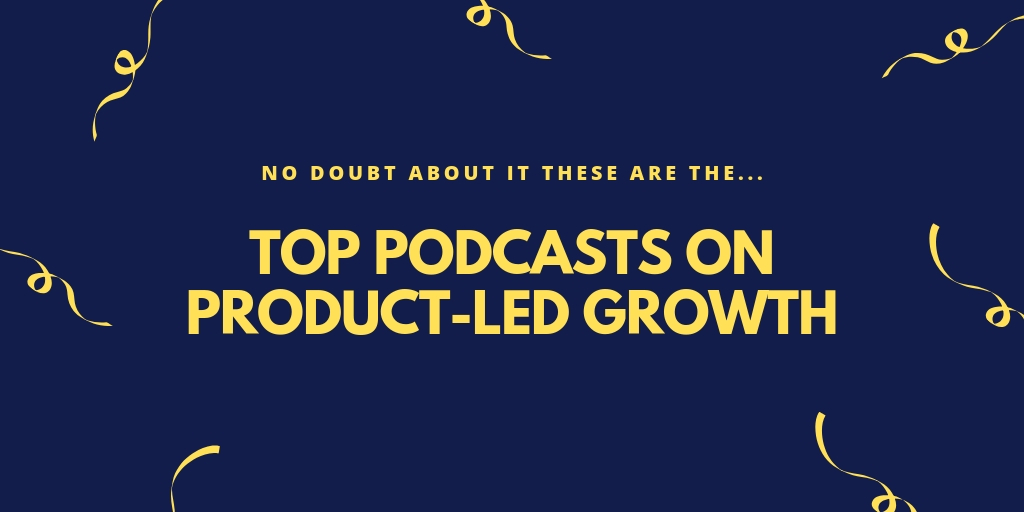
For the longest time, startups depended on the talent of their sales department to land their next customer. However, companies like Zoom, Slack, Airtable, and more recently Softr.io are inspiring more traditional sales-led companies to think about how to also turn their product into their biggest driver of growth.
But transitioning from sales-led to product-led growth is never easy and there isn’t a simple tactic that you can apply. In fact, it's more like a marathon as opposed to a sprint. I’ve helped some companies think and execute through this transition and the approach we followed can be summarized in the five steps below:
- Assess the opportunity and risk.
- Gain executive buy-in.
- Create a self-serve product experience.
- Improve the adoption experience.
- Get the results you need.
Let’s dive in.
1. Assess the Opportunity and Risk
Making any change to your business model will always carry a degree of risk. Therefore, before you can get executive buy-in or support from other departments, you will need to crunch the numbers and determine the risk associated with transitioning to a product-led business. Once you know the risks involved, you can create the best argument possible to present to your CEO.
When assessing risk, you need to ensure the potential reward outweighs what could possibly go wrong. As you analyze risk, consider the challenges each department within your company might face, including:
- Customer service: Can your customer support team handle thousands of new free users? What department changes are necessary to support that type of growth?
- Marketing: If you position yourselves as a premium product, what changes will you have to make to your messaging to market a freemium plan?
- Finance: While an influx of sales is always a good problem to have, are your finance and accounting departments equipped to process that many orders? Is your freemium offer sustainable from a cost perspective?
- Investors: The valuation of your company is partially dependent on your average deal size. Therefore, how will offering a freemium product or free trial impact the value of your average customer?
- Sales: Your sales department could be resistant to switching to a product-led model. However, how could this transition allow sales reps to focus on more significant accounts where their product expertise could be more valuable?
- Engineering: New users take time to understand your product; there will surely be opportunities for new product features and optimizations. Is your engineering team prepared to implement or validate dozens of these opportunities every other week?
2. Gain Executive Buy-In
Once you’ve assessed the risk (and potential rewards) of switching from a sales-led to product-led model, it’s time to approach your executive team. Ideally, you will want to get your CEO on board, but you’ll also need to consider the interests of your investors, board members, and the entire C-suite.
The best way to gain executive buy-in is to demonstrate how a product-led model can support the overall growth of your company. For example, if the CEO sets a goal of a 100% growth rate year-over-year, you will need to show actionable data on how a product-led model will help you get there.
For example, demonstrate the following:
- Growth rate: How many new accounts do you expect to sell by converting to a product-led model? How will this impact the growth rate of your company in one year?
- Customer acquisition: How will offering a free trial and/or scaling your onboarding procedures impact the cost of acquiring each new customer?
- Average deal size: With your sales team solely focused on premium accounts and many new customers opting for your free plan, what will be the average deal size of your new customer base?

It is only natural that the team gets excited about the possibilities. Make sure you clearly manage the expectations. Aim for a three-year journey, with many failed attempts and, above all, don’t model your upcoming quarters assuming this new go-to-market approach will drive significant impact.
3. Create a Self-Service Product Experience
The first step in transitioning to a product-led business is to allow new users to experience the product on their own. Depending on your company, this could be a free demo on your website or a freemium model.
A free demo allows users to enter and learn your product through trial and error — therefore gaining confidence before buying a subscription. Allowing users to experience the product might be implemented within:
- Your website: Create a demo product on your site that everyone can access. Consider having prospects register with their email address to experience the demo product.
- A freemium plan: Consider adding a freemium product model to your product. Your free plan should carry enough value to attract prospective customers while offering distinct differences from your paid-for plans.
- The sales experience: When a potential customer moves through the sales funnel and reaches the product demo stage, give them a free account. Allow the prospect 1-2 weeks to try the product on their own before attempting to convert them to a paid plan.
4. Improve the Adoption Experience
Transitioning from a sales-led to a product-led business allows your team to customize the experience to the individual user. As a prospect works through the product — whether they try the product for one day or one week — your team can make notes and recommendations of which features will best benefit their business.
To streamline the adoption experience and ultimately convert new customers, be sure to do the following:
- Collect feedback from first-time users: Get on the phone or chat with prospective customers throughout their trial experience. Watch them use the product, note which errors they make, what questions they have, what concerns they’re raising, and use these insights to improve the self-service journey.
- Develop a premium onboarding experience: If you haven’t already, dedicate people and resources to streamlining an onboarding experience. Test the product yourself, and create different resources that allow them to advance their knowledge and skill of your product on their own.
5. Get the Results You Need
Let me be clear, transitioning to a product-led business model is not an overnight process. In fact, it can take one year (if not three) to complete the transition.
And frankly, a lot can go wrong during that time.
Therefore, the fifth and final step is to get the results you need to move forward continuously. To do this, you’ll need to keep lines of communication open between all department heads, including:
- Executive team: Consider meeting with your CEO quarterly to share recent learnings and progress made.
- Sales and customer success: Sit in on prospect and new customer calls, and see which new opportunities you can pitch to the product team to increase the survival rate of users throughout the onboarding journey.
- Other departments: Consider implementing a monthly all-hands meeting between one representative from each department, so you can uncover the challenges each team faces on a daily basis.
Start Your Transition To a Product-Led Growth Model
Making the transition to a product-led growth model can help scale your company in ways a well-equipped sales team never could. However, making the switch to product-led growth isn’t an overnight transition.
To leave your sales-growth model behind, you’ll need to launch a demo product, refine your client onboarding process, assess risk, and gain buy-in from all department leads (including your executive team). Finally, you’ll need to gain and communicate the results needed to continue the transition over the course of the next year.





















